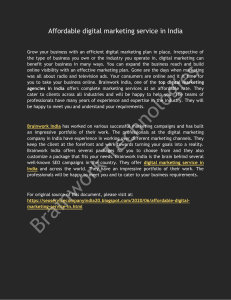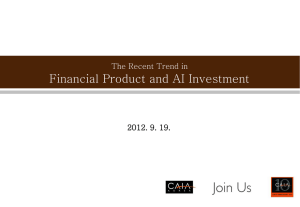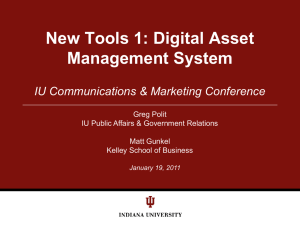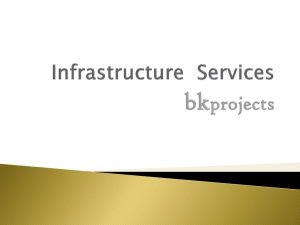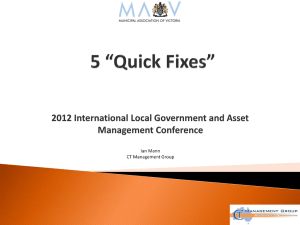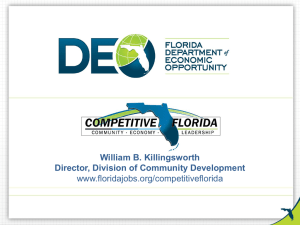HumanAssetMANIFESTO_..
advertisement
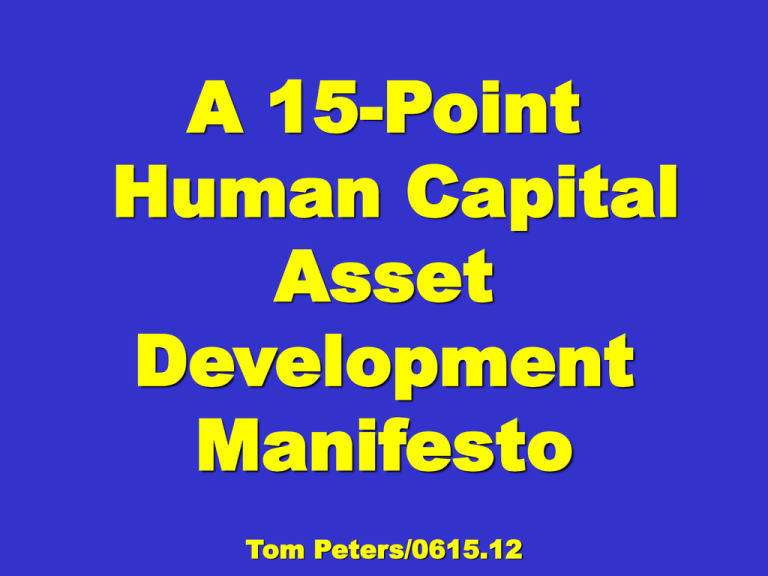
A 15-Point Human Capital Asset Development Manifesto Tom Peters/0615.12 I was intimidated by the title of a conference I addressed in Seoul, Korea. Namely, “Reframing capitalism.” And by the fact that a passel of Nobel laureates in economics would be addressing the issue. Then it occurred to me that the mid- to long-term “reframing” was more about recasting the nature of work/jobs in, for example, the face of 2020’s artificial intelligence than about whether the Spanish bailout is $100 billion or $400 billion—as nontrivial as the latter is. I.e., what the hell will the world’s four billion or so workers be doing, say, 10 years from now? I’m not sure that sophisticated econometric analyses will be all that helpful in determining an answer. A 15-Point Human Capital Development Manifesto “Corporate social responsibility” starts at home—i.e., inside the enterprise! MAXIMIZING 1. GDD/Gross Domestic Development of the workforce is the primary source of mid-term and beyond growth and profitability—and maximizes national productivity and wealth. (Re profitability: If you want to serve the customer with uniform Excellence, then you must FIRST effectively and faithfully serve those who serve the customer— i.e., our employees, via maximizing tools and professional development.) "If you want staff to give great service, give great service to staff." —Ari Weinzweig 2. Regardless of the transient external situation, development of “human capital” is always the #1 priority. This is true in general, in particular in difficult times which demand resilience—and uniquely true in this age in which IMAGINATIVE brainwork is de facto the only plausible survival strategy for higher wage nations. (Generic “brainwork,” traditional and dominant “whitecollar activities, is increasingly being performed by exponentially enhanced artificial intelligence.) “In some sense you can argue that the science fiction scenario is already starting to happen. The computers are in control. We just live in their world.” —Danny Hillis Three-star generals and admirals (and symphony conductors and sports coaches and police chiefs and fire chiefs) OBSESS about training. Why is it an almost dead certainty that 3. in a random 30-minute interview you are unlikely to hear a CEO touch upon this topic? (I would hazard a guess that most CEOs see IT investments as a “strategic necessity,” but see training expenses as “a necessary evil.”) Proposition/axiom: The CTO/Chief TRAINING Officer is arguably the #1 staff job in the enterprise, at least on a par with, say, the CFO or CIO or head of R&D. (Again, external 4. circumstances—see immediately above—are forcing our hand.) I would hazard a guess that most CEOs see IT investments as a “strategic necessity,” but see training expenses as “a necessary evil.” The training budget takes precedence over the capital budget. PERIOD. It’s easier fun to get 5. your picture taken next to a new machine. But how do you get a photo of a new and much improved attitude in a key distribution center? But the odds are 25:1 that the new attitude will add more to the bottom line than will the glorious state-of-the-art machine. Human capital development should routinely sit atop any agenda or document associated with enterprise strategy. Most any initiative you 6. undertake should formally address implications for and contributions to human capital asset development. Every individual on the payroll should have a benchmarked professional growth strategy. 7. Every leader at every level should be evaluated in no small measure on the collective effectiveness of individual growth strategies— that is, each individual’s absolute growth is of direct relevance to every leader’s assessed performance. “Knowledge becomes obsolete incredibly fast. The continuing professional education of adults is the No. 1 industry in the next 30 years.” —Peter Drucker Given that we ceaselessly lament the “leadership deficit,” it is imperative, and just plain vanilla common sense, that we maximize the rate of development of women leaders at every level—little if anything has a higher priority. (It is an outrage that this has not been 8. the case until now—and is still not the case in far too many institutions.) (And, while there are no guarantees, women are more likely dispositionally to take a shine to the imperative of maximizing human asset development.) Maximum utilization of and continued development of “older workers” (to age 70—or even beyond?) is a source of immense organizational and national growth and wealth. 9. The rapidly aging population, with oldies far more healthy and vital than ever, Ought to be an opportunity rather than a pain-in-the-butt to deal with. The practical key to all human asset development activities is the 1st-line manager. 10. (“Sergeants run the Army” is an accurate commonplace. observation—supported by development resources.) Hence development of the full cadre of 1st-line managers is an urgent—and invariably underplayed—strategic imperative. Arguably, the collective quality and development trajectory of 1st-line leaders is an organization’s #1 human asset development priority. (Consistent with all the above, the 1stline leader’s skill at “people development” is her or his top priority—for which she or he must be rigorously and continually trained.) 11. The national education infrastructure—from kindergarten to continuing adult education—may well be National Priority #1. Moreover, the educational infrastructure must be altered radically to underpin support for the creative jobs that will be more or less the sole basis of future employment and national growth and wealth creation. “Human creativity is the ultimate economic resource.” —Richard Florida 12. Associated with the accelerated priority of the national education infrastructure is a dramatically enhanced and appreciated and compensated role for our teachers—this must necessarily be accompanied by rigorous accountability. There is no doubt that “teaching” (instilling) insatiable curiosity, say, which is the #1 attribute of a creative person, is no easy task; however, there is no way that it can be ducked if one looks at future definitions of employability. “Every child is born an artist. The trick is to remain an artist.” —Picasso The great majority of us work in small enterprises; hence national growth objectives based upon human capital development MUST necessarily extend “downward” to even 1person enterprises. Collective productivity 13. improvement through human capital development among small businesses has an unimaginably large—and underappreciated— payoff. While many small business appreciate the notion, they are unprepared to take the steps necessary to engage their, say, dozen employees in seeking productivity improvements. Needless to say, the activities imagined here will only be possible if abetted by a peerless National Information and Communication Infrastructure. Indeed, the work 14. here is being done—and the need is appreciated and reasonably well funded. The effort must not falter; the new information-based tools are the coin of the realm. 15. Associated with the above is a RADICAL reorientation of leadership education and development—throughout the enterprise/education/continuing education infrastructure. (E.g., Among other things, the MBA and executive education will require open-heart surgery—aimed at shifting focus from finance and marketing to human resource development. ) To deal with the most likely future employment scenarios, leaders will need to be masters of the liberal arts—said arts are, again, the determinant of responding to the emerging world.



